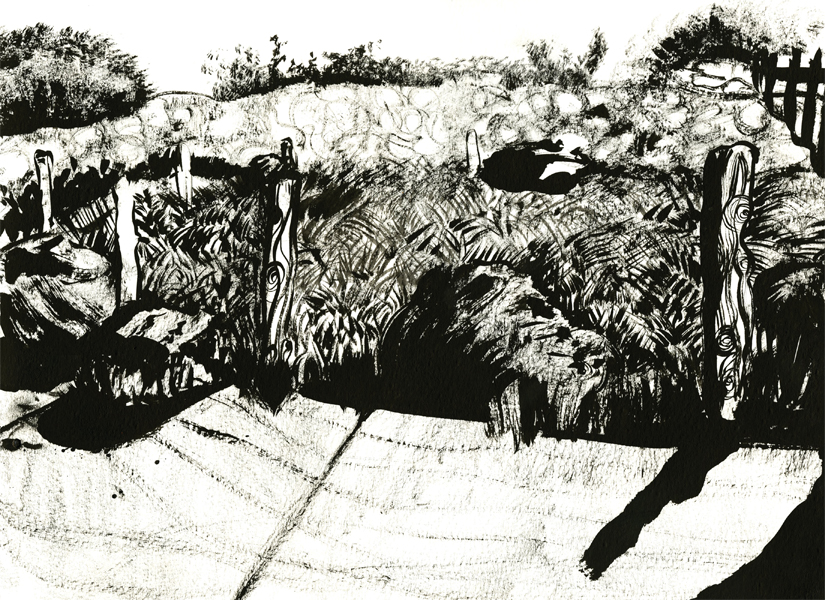We’re the People Who Move: The Poetry of Rootlessness

The ground, of course, does move under your feet. Ask the astronomers: it moves a thousand miles per hour, if you’re talking about the speed of the Earth’s spin; it moves more than sixty thousand miles per hour if you look at our laps around the sun; the speeds get even higher if you think about us sailing through the galaxy or the universe at large. On top of that, we move inexorably through time. Our bodies refuse to stop changing. The world transforms and retransforms around us, as people come and go and culture shifts in its various ways. In a life like this, there may be no place or moment stable enough to really earn the word home. And maybe that explains how you can grow up entirely in one American city—Philadelphia, in my case—and nonetheless feel itinerant.
And then you get to that stage we call grown-up—as though things are now going to stand still—and you discover that you’re in a pretty mobile society. People move for school, for jobs, for people. Between the time I turned eighteen and now, I’ve lived in Ohio, Wisconsin, Philadelphia again, New York, New Jersey, Indiana, Ohio again, and Washington, DC. There were lots of different homes in there—I’ve moved seven times in the last thirteen years. These days it’s hard to say where I’m from. (Let alone where I’m of, as they say in French.)
I think this mobility, or restlessness, or rootlessness, leaves an outcry in many of us, or maybe a song—a song that wants a voice.
In my case, it’s always been poetry that’s allowed me to sing it.
Why is that? I write fiction, too, and some non-fiction, and the occasional play. Why does homelessness find its place in poetry?
Well, the theater stage is certainly a hard place to study movement; unless you get pretty creative, in a play you’re literally confined to a space.
And fiction—well, I think that there are times when you want to tell the direct and literal truth. Of course, there’s no requirement that says poetry has to be factually honest, and my stuff certainly bends the truth at times, and outright lies at others. But it does often tell things just as they actually are (at least to my understanding), while fiction necessarily refracts my feelings and experiences through other lives. No matter how widespread the search for home might be across our culture, it still feels deeply personal, and I don’t think I want to understand it through other lives. I want to understand it through mine.
So why not non-fiction, then? An essay? Well, this piece is evidence that non-fiction can be a place to talk these things through. But essays want conclusions. Already, this deep into this piece, I’m feeling that pressure—this sentence is a kind of conclusion, in fact—and what about the times when you don’t have answers? I’m not sure the unsettled person is in a position to hand down verdicts.
No—I don’t want stillness or alternate personas, and I’m not equipped to arrive somewhere profound. I think what I want is only to sing the feeling. And I’m not alone in this.
O Western wind, when wilt thou blow
That the small rain down can rain?
Christ, that my love were in my arms
And I in my bed again!
This poem—anonymous—is five hundred years old, from a time when getting around was a lot harder. Still this speaker was displaced. And s/he apparently didn’t have answers—only questions. This person turned to poetry.
Or, a lot more recently, take the anthology American Diaspora: Poetry of Displacement (Eds. Virgil Suarez and Ryan Van Cleave), which I found at a moment in my life when I felt particularly diasporic.  Reading a book like this is like finding a truck stop off a massive American highway and pausing to listen to the people going by. You find that you know their songs; you recognize them: “We come to his country/By every roundabout,/With hunger like a startled face” (Wyatt Prunty); “I can’t remember the air, the light, the voices/Of what I used to think of as my home;” (Mark Jarman); “there is no table set for me, nowhere/I can go to be filled” (KimAddonizio); “Are we ever anywhere, can we ever feel/more about a place than the desire/to come back someday when we have the time?” (Jim Shugrue); “I am the boy, stomach flat on sand./I reach under the barbed wire fence/for homeland dirt.” (Katherine Sanchez); “You can’t be two places at once? You are always at least/two places at once. That is alive person” (Heather Sellers); “I put on my tall rubber boots,/zipped my duffel that could be lifted/high as a child overhead and made/my way toward the flume” (Patty Seyburn).
Reading a book like this is like finding a truck stop off a massive American highway and pausing to listen to the people going by. You find that you know their songs; you recognize them: “We come to his country/By every roundabout,/With hunger like a startled face” (Wyatt Prunty); “I can’t remember the air, the light, the voices/Of what I used to think of as my home;” (Mark Jarman); “there is no table set for me, nowhere/I can go to be filled” (KimAddonizio); “Are we ever anywhere, can we ever feel/more about a place than the desire/to come back someday when we have the time?” (Jim Shugrue); “I am the boy, stomach flat on sand./I reach under the barbed wire fence/for homeland dirt.” (Katherine Sanchez); “You can’t be two places at once? You are always at least/two places at once. That is alive person” (Heather Sellers); “I put on my tall rubber boots,/zipped my duffel that could be lifted/high as a child overhead and made/my way toward the flume” (Patty Seyburn).
“Much in this collection,” write the editors, “seems to have been written out of emotional necessity.”Exactly. From what other place could it have been written? And what I like most about this statement is the way it implies that emotional necessity is a place. A location. A somewhere. A somewhere out of which you can write.
Is poetry, then—the singing of our displacement—the construction of a mobile emotional home that we can bring with us through all the changes and dislocations? (The essay yearns for conclusions.)
Maybe. If so, though, it’s mobile in more than one way; it’s a home whose contours constantly change. Sometimes it’s a big space, and sometimes narrow; sometimes it’s quiet and sometimes loud. You rearrange the furniture a lot. Look out of different windows. In other words, this portable and personal home that we make in poetry changes because our concerns change, our insights change, our voice changes.
If poetry is a home, it’s not a home that brings us to rest. It’s a home that can house your homelessness without resolving it. A home that—fortunately, I think—only invites more singing.
Artists:
"Irish Hunger Memorial Study" by Jessica Mercado. She is a New York based illustrator who enjoys delving into the relationships between people, and is fascinated about how people can affect one another. She uses metaphors, lighting, color, and composition to create mood and meaning between her characters’ interactions. Jessica has earned her BFA in illustration from Parsons the New School for Design.
"Tio telefontrådar från det gröna huset" (Ten Telephone Wires from the Green House) by Malin Koort. An illustrator and artist based in Uppsala, Sweden. She mainly does editorial illustrations, but has also created book covers, furniture patterns and stamps for the Swedish Post. She has a couple of different techniques that she works with (ink drawings and digital collages) but during the last year, she has worked mostly with paper illustration, and therefor has also been learning more about lighting and photography. She likes to make images with a lot of detail in them, and trys to tell many small side stories next to the big story. Most of all, Malin wants to create illustrations that make people happy, and maybe remind them of something they had forgotten about.
"Pipeworks" by Grace Russell. She is a freelance Illustrator based in London. Her work combines disparate pieces of collage with paint and charcoal to create evocative imagery that is both playful and controlled; the careful interplay between the figurative and abstract give her illustrations a unique visual language that hints at underlying themes and provokes questions to be asked. Grace graduated with a First class BA (Hons) degree in Illustration from the University of Westminster, winning the Achievement Award in her first year. In 2014 she won the V&A Illustration Awards Student Category and was featured as one of Reyker’s emerging artists. She has worked with a range of clients including the V&A museum, Therapy Today, Voyeur (Virgin Australia/Pacific Magazines), Tablet Magazine, SOFFA, PRN Magazine, Sony and P&G.
Recommended
Nor’easter
Post-Op Appointment With My Father
Cedar Valley Youth Poet Laureate | Fall 2024 Workshop






